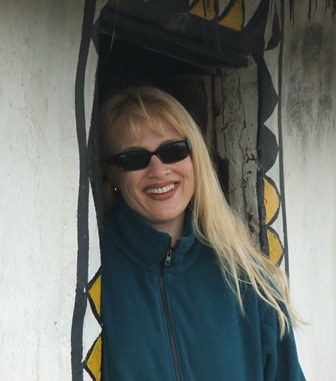
Stem cells are either a miracle of modern medicine or the work of Satan – depending on whom you ask. So author and Biznews contributor Heather Dugmore decided to take a look at what’s happening on that front in South Africa and came to the surprising discovery that stem cells are saving lives in this country. Great piece. – AH
When you raise the subject of ‘stem cells’ a hushed silence often follows as people imagine brains, hearts and limbs cultured from human embryos.
While this is certainly one type of stem cell (known as the pluripotent stem cell) there is another altogether different type known as the committed stem cell.
Committed stem cells have already decided what they are going to be, such as blood or bone marrow stem cells, medically known as haemopoitic stem cells. Pluripotent stem cells, by contrast, are still in the undetermined stage and have the potential to become any organ.
“At between 8 and 14 weeks pluripotent stem cells commit to becoming a particular organ, be it brain, heart, liver or any other part of the body,” says Dr Jackie Thomson, a clinical haematologist who has been doing blood and bone marrow stem cell transplants for the past eight years.
“Our unit works specifically with committed stem cells, which are readily available in the adult body and which have nothing whatsoever to do with embryos.”
Dr Thomson and Dr David Brittain are co-directors of the Albert Cellular Therapy Unit at the Netcare Pretoria East Hospital, which has the largest haematology team in Africa, performing 80 transplants a year.
The Joint Accreditation Committee of the European Bone Marrow Registry and the International Society of Stem Cell Therapies accredits the unit.
“We treat blood disorders, lymph cancers, bone marrow cancers and metabolic disorders. Other conditions treated include sickle-cell disease, myelodysplastic syndrome, Ewing’s Sarcoma and Hodgkin’s disease,” continues Dr Thomson.
There is no one single cause that can be identified as the trigger for any of these diseases.
“Possible causes include a wide range of factors – from previous chemotherapy to certain viral infections to the fact that we are constantly exposed to so many toxins, pollutants and forms of radiation in modern society,” she explains.
“Fortunately we all have numerous haemopoitic stem cells in our bone marrow. As a result they can be harvested from a healthy donor whose blood and bone marrow is compatible with the patient. The healthy bone marrow is either extracted from the donor with a needle from the hipbone or the blood/bone marrow stem cells of the healthy donor are mobilised so that they start circulating in the blood. From here we can extract them using a blood filter – the process is very much like donating blood.”
Matching a patient with a donor (known as HLA typing) is not easy with a one in 100 000 chance of a match between unrelated individuals. Siblings have the greatest chance of a match but even then there is only a one-in-four.
“A recent break through is that worldwide a new method of transplantation has been developed, in which we can use stem cells from a 50% match donor. This method has been used with great success in patients who are unable to find a perfect match. This is called haplo-identical transplants,” she explains.
The majority of transplants undertaken at the unit are with stem cells from unrelated donors. Most are from international donors and donor registries. The unit has performed stem cell transplants with donors from France, Germany, the United Kingdom and the United States.
The international registries provide 14-million possible donors. Sixty percent of these are of Caucasian descent.
“There is a desperate need for black people of sub-Saharan descent to donate bone marrow to the South African Bone Marrow Registry as only about 2-3000 of the approximately 63 000 donors on the South African Bone Marrow Registry are black,” says Dr Thomson.
The success rate of the transplant often depends on the age and condition of the patient. The younger you are and the sooner you have the transplant the better. The longer you leave it, the more your body tends to deteriorate and the faster the cancer or disease can spread.
The good news is that worldwide there is now a 60% success rate for blood/bone marrow stem cell transplants, which compares extremely favourably with the zero percent survival stakes of patients with severe blood/bone marrow diseases who do not have the transplant.
“Significant advances have been made in stem cell transplantation and this procedure is truly life-saving,” says Dr Thomson. “It is a great step forward.”
Article by: Heather Dugmore
Article Source: Biz News
